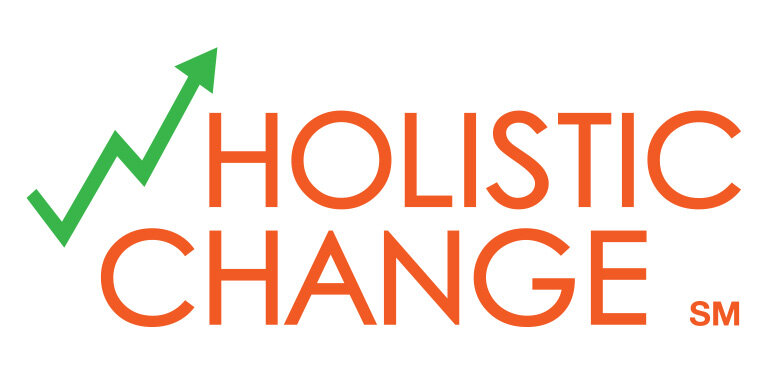Making the Case for Change
We define change as transitioning from what people do today to what you want them to do tomorrow. When you want people in an organization to change, you cannot lose sight of the importance of incorporating the change into every aspect of their business.
4 questions to understand the motivations for change and what you hope to get out of it- What is the business problem or opportunity?
- Who wants to change?
- Why do they want a change?
- How will the change benefit the person or organization who wants it? Why would the change be a good thing?
Defining Success
At the outset of embarking on a change effort, you must be able to describe what success looks like. This allows you to know if you are making progress toward the goal, to quantify the progress, and to identify opportunities to adjust if the goal is not being achieved.
3 questions to define successful change- How will you measure success?
- What will the change look like once it is implemented?
- How will you know that change has actually happened?
Avoiding Pitfalls: How Not to Approach Change
One characteristic of unsuccessful changes is having no clear organizational understanding of the continuous improvement process. Nor is there an understanding of how or when feedback will be implemented if the change is not working.
We offer an alternative approach to driving corporate change: Leaders driving change involve their employees in the process. They consider the impacts of their decisions on the welfare and engagement of their employees during and after the change process. This is why we created wHolistic Change℠. Our focus is on setting up employees, as well as their companies, for success.
Gaining Sponsorship
The executive sponsor will be the name and face associated with the change. The sponsor provides guidance in developing the change team, acts as the escalation point as issues arise, and keeps the momentum going through garnering excitement and celebrating the successes. The sponsor will be called upon to make critical decisions—up to employment-related decisions—when active resistance is encountered.
5 questions to ask when assessing candidates to become your executive sponsor- How committed is she to the change?
- Is she willing to send communications and visibly demonstrate her dedication to the change? Will she use her political clout to ensure a successful deployment across the organization?
- Will she fund or help obtain funding, as needed, to support the change?
- Will she chair a steering committee of peers to gain additional executive support for the change and to ensure that you are not a lone voice in a sea of passivity or resistance?
- Has she ever acted as a change sponsor before? If not, you may need to train your sponsor to ensure that she is prepared for her role and what it means.
If an executive sponsor is missing from your change initiative, STOP NOW! Without strong sponsorship, you will only frustrate people and not successfully deploy the change.
Creating Change Agents
The wHolistic Change℠ approach is all about identifying the contributions that each player makes, while using their natural enthusiasm and sense of ownership to drive change. That statement just described a change agent. Change agents need to act as coaches and cheerleaders to guide your people through the steps they need to take to adopt the change.
7 skills needed to successfully act as an agent of change- Envisioning what is possible
- Asking powerful questions
- Listening actively
- Welcoming ideas from others
- Developing trusted relationships
- Influencing without authority
- Recognizing that the goal is change, not personal glory
Planning the Change Effort
What state is the organization in? How much change can the organization tolerate at one time? When planning how to deploy the change, don’t overload! And, recognize that if you do overload, there will be a significant dip in employee satisfaction and you will lose people and lose productivity — OK, if you’re cognizant of this and it’s in the plan… but, don’t be caught unaware.
7 steps to plan a successful change- Identify all stakeholders and named individuals to represent those business areas
- Perform Current State Analysis using the 4 quadrants (services, people, process, and technology). To move your organization from here to there, you have to know where “here” is.
- Perform Future State Analysis using the 4 quadrants. What does your world look like after the change is implemented and your organization is performing?
- Decide on achievable, relevant change. For people to be excited and engaged in making change happen, they have to believe that change is important and that it can be achieved.
- Develop the Change Message, the unifying vision statement that combines the success metrics with the quadrants impacts that will make the change a reality.
- Develop a deployment strategy that is realistic and achievable. Determine whether to deploy in phases or all at once; assess what other changes are going on in the organization that impact your stakeholders; and decide whether you can pilot to prove viability of the change before you roll it out more broadly.
- Create the Change Road Map, a visual representation to drive common understanding and sense of commitment for what is about to happen.
Establishing a Change that Lasts
Having a mechanism to provide continuous improvement feedback on the change makes people feel valued and more likely to be willing to try something new. Creating Communities of Practice (CoPs) of employees impacted by your change is a great way to give a voice to the people impacted by the change.
By participating in a CoP, community members exchange ideas, collaborate, and learn from one another. Members identify best practices, develop expertise, and are able to access a constant flow of information to do their jobs better and more consistently.
Executing the Change
Communication planning requires an understanding of the organization, the change, and the key messages that are most important for the organization to understand. What your audience cares about and how you market the change to them will determine how quickly and how successfully the wHolistic Change℠ will take hold.
5 components of the change management and communication plan- Identify the target audience for the messages and what they care about.
- Brand the change.
- Determine the frequency and format of communications, by audience.
- Consider the culture and its impact on stakeholder action or inaction.
- Recognize that all change efforts have an inherent element of evolution in them.
Setting People up for Success
Different changes require different degrees of operational support in order to sustain them. Nevertheless, all change management plans must include a continuous improvement feedback loop to give your organization the means to provide feedback on how well the change is taking hold and suggestions for how to make it better.
How your Communities of Practice will help you make the change operational- Establish the Continuous Improvement feedback loop from and to the change team (required)
- Create templates and samples
- Develop job aids
- Align the change with other processes in the organization
- Govern the change
Training and Development
In order to adopt the change, do the people in your organization require new skills? Job re-training? Support as they go through the learning curve? After you have communicated the need for change, how do you know that your organization is behaving differently?
What development resources do you need to create in order to drive your change?- Training and certification: Kirkpatrick’s 4 levels of training evaluation (1959)
- Reaction to the change
- Increase in knowledge about the change
- Application of the change in terms of behavior change
- Measurement of effect on the business or environment
- Individual level competencies: PMI, Six Sigma, etc?
- Organizational level competencies: CMMI, TMMI, etc?
- Incentives for adopting the change?
Reporting Progress
Remember to put the change in the context of overall change happening in the organization and in the customer community to help make the impact of the change “real” to your target audience.
When parts of the deployment strategy fail, it is important to be honest about them. This will build credibility in the eyes of your sponsor as well as throughout the organization. Not every item on your deployment strategy will go as planned. Provide reporting to manage expectations throughout the change process about what has changed and what still needs to happen.
6 items to include in your status reports- Change objective: What you set out to accomplish (Change Message).
- Measurement of success: How you defined change in terms of business value and how you are doing against those goals (Define Success).
- Change road map: The high-level picture showing the stages of services, people, process, and technology changes (Change Road Map)
- Key milestones: Planned completion dates for key change deliverables (Deployment Strategy).
- Success stories: What has worked well? What beneficial changes have you already seen? What customer delight stories have you heard?
- Critical issues and risks, including resolution plans and timing.
Overcoming Resistance to Change
In W. Edwards Deming’s 14 Points for Management (Out of Crisis, 1986), principle #8 to transform a business is “Drive out fear, so that everyone may work effectively for the company.” wHolistic ChangeSM attempts to drive out fear by performing all of the tactical activities we have included in our approach. However, despite the best intentions, you will still encounter resistance to change.
7 techniques to handle and overcome resistance to change- Keep the change itself simple and easy to adopt. If the change is viewed as too onerous, or as taking too long to see results, it will not be successful.
- Ensure peoples’ incentives are tied to the change. If there is a disconnect, people will focus on how their bonuses are decided (even if they recognize the change as the right thing to do).
- Involve middle managers throughout the change planning process. Middle management will determine if behavior change will actually happen. They manage the front-line employees, set work priorities, and are ultimately responsible for the relationships with your customers.
- Recognize that resistance to change is normal. There will always be some form of resistance to change. When people are asked to think or behave differently from how they have become accustomed, there will naturally be some hesitation and fear.
- Maintain your sense of humor. It is critical for your sanity—and for that of the entire change team—to maintain perspective and to try to find the humor in the challenges you are facing.
- Don’t take anything personally. Recognize that the goal is change, not personal glory. Do not take resistance personally!
- Communicate constantly. Before deciding to change, adults need to know the reason change is needed and how well change is taking hold. In order to control the perception of the change, you must provide constant communications—who, what, when, where, why, how, and how well. Lacking direct personal knowledge, people will make up their own stories.

